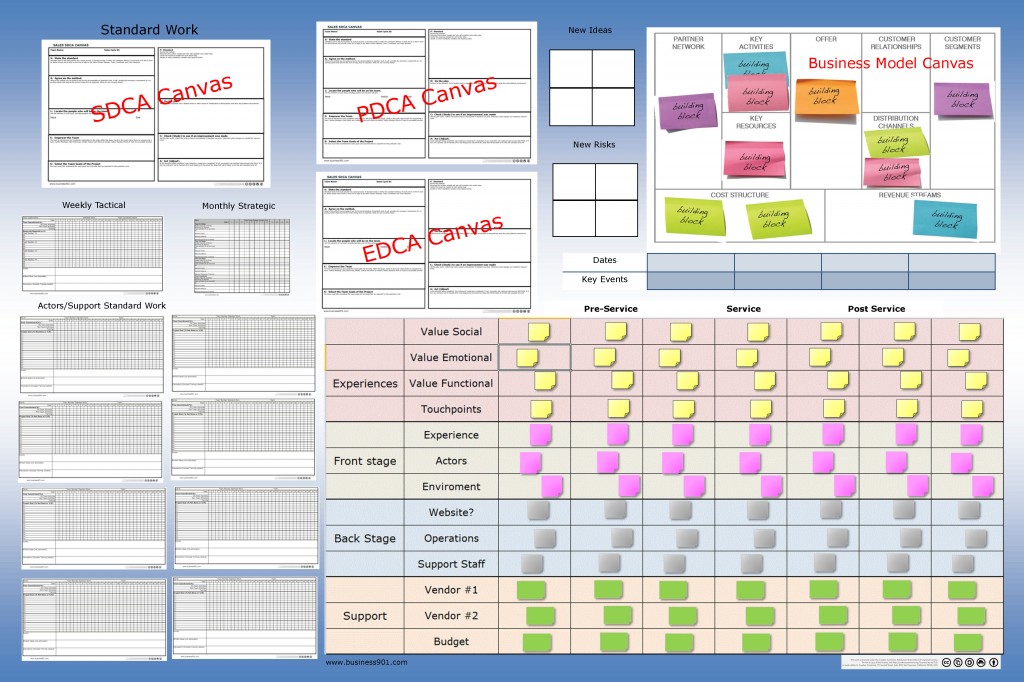This is the Visual Management Board that I use as part of Lean Service Design Trilogy Program. It allows the Lean Engagement Team and others, instant status updates. The goals of Visual Management is to connect people to the processes they perform, communicate successes and issues in the work area and show goals versus actual performances. I have always remembered and adhere to the statement that Dr. Gwendolyn Galsworth said in a Business901 podcast, If you’re not Visual, you’re not Lean.
The board was created as part of the toolset for the Lean Service Design Trilogy Program. An actual Visual Management board may or may not include all of these components.
A brief description of the components, starting at the top right and working clockwise:
The Business Model Canvas is an analytical tool outlined in the book Business Model Generation. It is a visual template preformatted with the nine blocks of a business model, which allows you to develop and sketch out new or existing business models. This book has sold over 220,000 copies the past two years and has established itself as one of the leading sources of modeling for both startups and established businesses.
Important Dates and Events are noted.
The Service Blueprint contains Customer Journey Map, Onstage Actors(Employees), Backstage(Employees), Support processes and Vendors, and the Environment. I include the three components of value; social, emotional and functional. I have depicted a post-it-note in every block though in reality there seldom is.
Standard Worksheets are depicted for the Actors and Support teams. these can be auto-populate or completed by hand. I have also used Kanban boards in lieu of worksheets. Virtual Teams can use something as simple as Google Documents or many other popular software packages.
The Weekly Tactical and Monthly Strategic Sheets provide the discussion points and the line of sight between the actors/support teams and the Team Coordinators and Value Stream Managers.
SALES SDCA/PDCA/EDCA: The SALES (this is an acronym, do not take it literally) part of the framework is where the actors/support team gets its directions and coaching from the team coordinator and value stream manager. Within the actual SDCA/PDCA/EDCA cycles the sales team is empowered to make their own choices and determine their own direction to accomplish the goals of that cycle. One of the key considerations in developing a team is to determine the objective of the cycle. Is it primarily creativity, problem-resolution, or tactical execution?
Ideas and Risk matrixes are included to quickly identify any problems and opportunities that present themselves. These later can be included into the appropriate canvases.
The question always comes up, do I need a Visual Management board for each Value Stream or in lay terms services or products. My answer is the standard, it depends. Sometimes it will be for a group of products or services and other times it will be for only a “vital few”.
Lean Service Design Trilogy Program


Comments are closed.